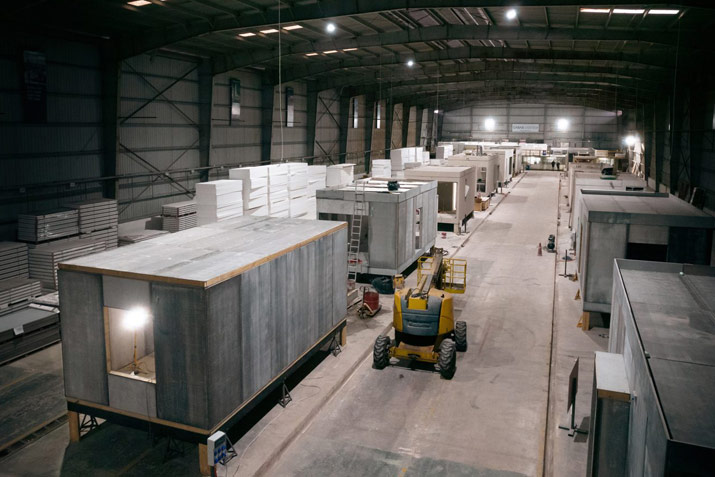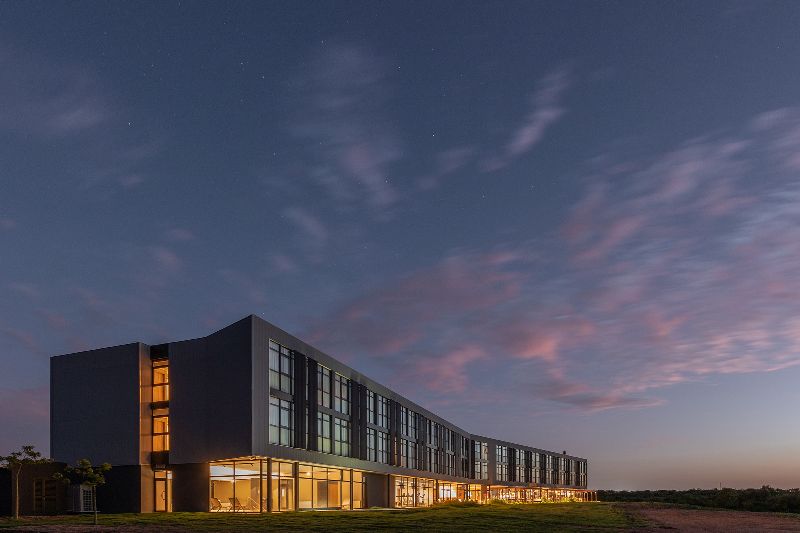

Modular, factory-built homes utilising an innovative ceramic panel for the floors, walls, and roofs.
Vantem, a modular housing startup, are positioning their homes to be not only energy efficient and cost-effective, but also capable of withstanding extreme weather conditions. According to Chris Anderson, the founder and CEO of Vantem, this achievement is made possible through the using a ceramic-like panel for the floors, walls, and roofs. Despite resembling cement, this ceramic panel is claimed to be significantly less carbon intensive.
Moreover, Anderson emphasises that the design of the panel is proprietary formula, and sits in contrast to other panels that need additional reinforcements or protective layers. And, according to company sources, Vantem’s panels are entirely structural, weather resistant, and fire retardant, and further, eliminate the need for drywall or cladding and can be easily painted.
Anderson asserts that Vantem’s technology simplifies the construction process by employing a single panel that replaces all structural elements and insulation. The result is a reduction in construction complexity and time. Remarkably, a single Vantem factory can produce up to 1 million square feet of living space annually. By the time a unit leaves the factory, it is already 80% complete, with the remaining on-site work, such as foundation pouring. On average, Vantem-built structures are 20% more cost-effective than traditional construction methods and significantly reduce total construction time.

“The killer difference,” Anderson declares, “is the energy efficiency.” On average, Vantem homes are 70% more energy efficient than conventionally constructed homes adhering to building codes. This translates to reduced operating costs for homeowners and a decreased CO2 footprint. Over a span of 50 years, a 2,200-square-foot Vantem home would emit 2,000 tons less CO2 from heating and cooling compared to a traditionally built home.
Watch their story
Vantem structures have also demonstrated resilience in extreme environments, including Antarctic conditions, an 8.2 magnitude earthquake, and the arid Atacama Desert in Chile, where rainfall has been absent for centuries.
Last year, Vantem made its entry into the U.S. market with investments led by Breakthrough Energy, founded by Bill Gates. Over the next decade, the company plans to establish 20 factories in the U.S., half of which will be newly constructed greenfield factories, and the other half acquired through acquisitions. These factories will collaborate with major developers to produce affordable and energy-efficient homes. Notably, Vantem recently acquired Affinity, a Georgia-based modular builder renowned for its hurricane-resistant wood-framed homes. Vantem intends to integrate Affinity’s process with their ceramic panels, resulting in net-zero homes that operate independently of the energy grid.
See: https://vantem.com/